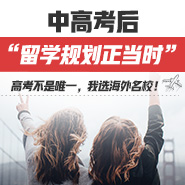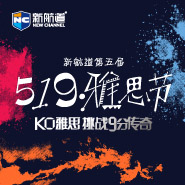【2012年8月19日】托福阅读机经回忆及解析
2013-06-26 13:48 供稿单位: 新航道
出国英语考试有哪些 雅思6.5是什么水平 雅思阅读评分标准 托福阅读评分标准 雅思和托福的区别
新航道托福频道小编为大家整理了托福阅读机经回忆及解析,供大家参考,以下是详细内容。
2012年8月19日托福考试尘埃落定,新航道“托福考试国家队”,时间为您回忆及解析本场考试托福阅读真题机经,帮助托友们知己知彼。
2012年8月19日托福考试是NA拼盘
【具体内容】
Reading (重复NA2011.7.8)
Passage 1
【主旨】the first eye
【内容】眼睛的进化史,有个时期的动物化石非常少,导致没有证据证明眼睛的进化,直到哪一处出土的化石极具重要性,发现眼睛其实进化很长时间了。
Passage 2
【主旨】古代的石头工具及陶瓷
【内容】这篇主要是讲两个东西:一个是石器,一个是陶瓷碎片。文章首先说从很早以前至今石器长期的使用;然后又说了石器的一些研究方法, 科学家自己做一些石器,然后在布料什么上划出痕迹来确认,但是这个方法很模糊;文章有开始讲陶瓷,开始说是土陶,土陶可以用阳光或者是低温的烧制,但是很难保存。之后就是瓷器,说中国、埃及等一些国家可以烧制耐用的瓷器,这下这些东西就能保存了。之后说科学家的研究结果,说这些瓷器,可以表示统治阶级的一些东西,然后也可以反应社会各个阶层的东西。有个例子是,这个东西不但可以装水,而且还可以表示制作者可以跟神沟通之类的。
扩展阅读:China has one of the world's oldest continuous civilizations—despite invasions and occasional foreign rule. A country as vast as China with so long-lasting a civilization has a complex social and visual history, within which pottery and porcelain play a major role.
The function and status of ceramics in China varied from dynasty to dynasty, so they may be utilitarian, burial, trade-collectors', or even ritual objects, according to their quality and the era in which they were made. The ceramics fall into three broad types—earthenware, stoneware, and porcelain—for vessels, architectural items such as roof tiles, and modeled objects and figures. In addition, there was an important group of sculptures made for religious use, the majority of which were produced in earthenware.
The earliest ceramics were fired to earthenware temperatures, but as early as the fifteenth century B.C., high-temperature stonewares were being made with glazed surfaces. During the Six Dynasties period (AD 265-589), kilns in north China were producing high-fired ceramics of good quality. Whitewares produced in Hebei and Henan provinces from the seventh to the tenth centuries evolved into the highly prized porcelains of the Song dynasty (AD. 960-1279), long regarded as one of the high points in the history of China's ceramic industry. The tradition of religious sculpture extends over most historical periods but is less clearly delineated than that of stonewares or porcelains, for it embraces the old custom of earthenware burial ceramics with later religious images and architectural ornament. Ceramic products also include lead-glazed tomb models of the Han dynasty, three-color lead-glazed vessels and figures of the Tang dynasty, and Ming three-color temple ornaments, in which the motifs were outlined in a raised trail of slip—as well as the many burial ceramics produced in imitation of vessels made in materials of higher intrinsic value.
Trade between the West and the settled and prosperous Chinese dynasties introduced new forms and different technologies. One of the most far-reaching examples is the impact of the fine ninth-century AD. Chinese porcelain wares imported into the Arab world. So admired were these pieces that they encouraged the development of earthenware made in imitation of porcelain and instigated research into the method of their manufacture. From the Middle East the Chinese acquired a blue pigment—a purified form of cobalt oxide unobtainable at that time in China—that contained only a low level of manganese.Cobalt ores found in China have a high manganese content, which produces a more muted blue-gray color. In the seventeenth century, the trading activities of the Dutch East India Company resulted in vast quantities of decorated Chinese porcelain being brought to Europe, which stimulated and influenced the work of a wide variety of wares, notably Delft. The Chinese themselves adapted many specific vessel forms from the West, such as bottles with long spouts, and designed a range of decorative patterns especially for the European market.
Just as painted designs on Greek pots may seem today to be purely decorative, whereas in fact they were carefully and precisely worked out so that at the time, their meaning was clear, so it is with Chinese pots. To twentieth-century eyes, Chinese pottery may appear merely decorative, yet to the Chinese the form of each object and its adornment had meaning and significance. The dragon represented the emperor, and the phoenix, the empress; the pomegranate indicated fertility, and a pair of fish, happiness; mandarin ducks stood for wedded bliss; the pine tree, peach, and crane are emblems of long life; and fish leaping from waves indicated success in the civil service examinations. Only when European decorative themes were introduced did these meanings become obscured or even lost.
From early times pots were used in both religious and secular contexts. The imperial court commissioned work and in the Yuan dynasty (A.D. 1279-1368) an imperial ceramic factory was established at Jingdezhen. Pots played an important part in some religious ceremonies. Long and often lyrical descriptions of the different types of ware exist that assist in classifying pots, although these sometimes confuse an already large and complicated picture.(TPO10-2)
Passage 3
【主旨】行星的卫星
【内容】土星的两个卫星,一颗17天转一圈,离土星最远,气温黑夜在-140度,科学家认为mantle冻成冰一样硬,但通过伽利略号望远镜发现好像并不完全是。还有一个卫星,因为离土星最近,所以有地质活动,形成了峡谷山脉,一段问两者的区别,区别(这里有考题)(一题是分别选出两颗卫星的特点,前面两点,后面三点)
扩展阅读:Europa is the smallest of planet Jupiter’s four largest moons and the second moon out from Jupiter. Until 1979, it was just another astronomy textbook statistic. Then came the close-up images obtained by the exploratory spacecraft Voyager 2, and within days, Europa was transformed-in our perception, at least-into one of the solar system’s most intriguing worlds. The biggest initial surprise was the almost total lack of detail, especially from far away. Even at close range, the only visible features are thin, kinked brown lines resembling cracks in an eggshell. And this analogy is not far off the mark.
The surface of Europa is almost pure water ice, but a nearly complete absence of craters indicates that Europa’s surface ice resembles Earth’s Antarctic ice cap. The eggshell analogy may be quite accurate since the ice could be as little as a few kilometers thick –a true shell around what is likely a subsurface liquid ocean that, in turn, encases a rocky core. The interior of Europa has been kept warm over the eons by tidal forces generated by the varying gravitational tugs of the other big moons as they wheel around Jupiter. The tides on Europa pull and relax in an endless cycle. The resulting internal heat keeps what would otherwise be ice melted almost to the surface. The cracklike marks on Europa’s icy face appear to be fractures where water or slush oozes from below.
Soon after Voyager 2’s encounter with Jupiter in 1979, when the best images of Europa were obtained, researchers advanced the startling idea that Europa’s subsurface ocean might harbor life. Life processes could have begun when Jupiter was releasing a vast store of internal heat. Jupiter’s early heat was produced by the compression of the material forming the giant planet. Just as the Sun is far less radiant today than the primal Sun, so the internal heat generated by Jupiter is minor compared to its former intensity. During this warm phase, some 4.6 billion years ago, Europa’s ocean may have been liquid right to the surface, making it a crucible for life.(老托福2003.10-1)
词汇题:
Designation=identification
Ambiguous=more than one meaning
Aggregations
Lateral
Signature
little short miraculous
以上是新航道托福频道小编为大家整理的托福阅读机经回忆及解析,希望对大家有帮助,更多资讯、资料请访问新航道托福频道https://www.xhd.cn/toefl/

- 新航道,英语成功之道。时间获取新航道英语学习资料和新鲜资讯,请在微信公众账号中搜索「新航道英语」或者「xhdenglish」,或用手机扫描左方二维码,即可获得新航道每日精华内容推送和英语学习经验分享,并参与新航道举办的各项活动。
精彩专题
更多视频荟萃
更多
-
120托福节之李老师:你的托福阅读领路人!
时长:01-18

-
120托福节之冉维:你的托福写作领路人!
时长:01-18
托福预测
更多
-
2017年托福听力考情分析及2018年备考建议
2017 年全年的48 场新托福考试已经落下帷...
- 2017年托福口语考情分析及2018年备考建议
- 2017年托福阅读考情分析及2018年备考建议
- 2017年托福写作考情分析及2018年备考建议(下)
- 2017年托福写作考情分析及2018年备考建议(上)









